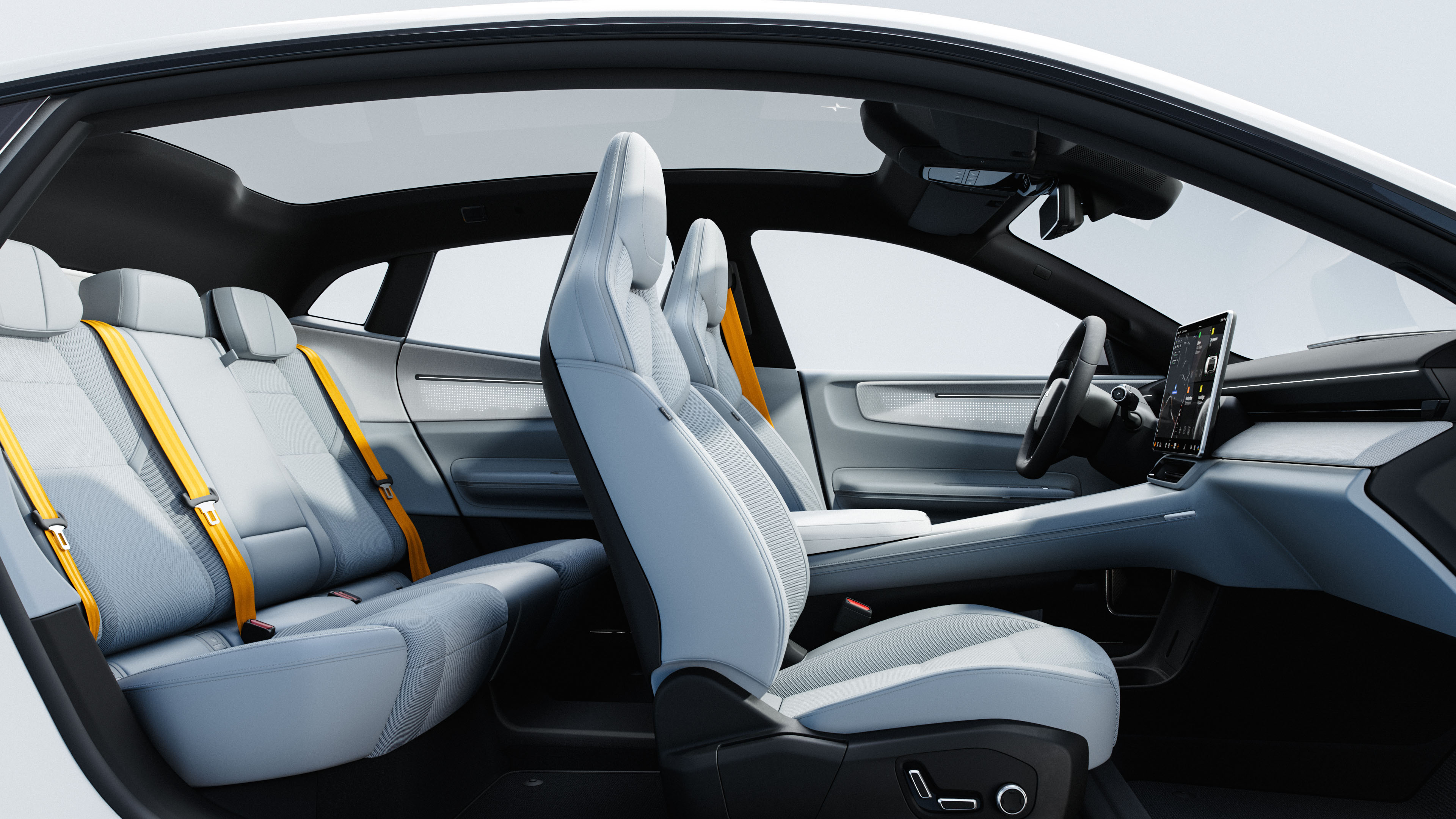
The Polestar 4 is an electric SUV-coupe… with no rear window
Polestar’s fourth all-new car asks you to think differently about your rear view
Much like the first half of an Alfred Hitchcock movie, this new Polestar 4 appears to chart in a straightforward direction. The now-obligatory fastback version of its big SUV, powered by electricity and priced from between €50k-75k, hitting a profitable segment of the car-buying market. It even looks good, as all Polestars do.
So, welcome to the new Polestar 4: a €50k+ lifted coupe that promises a stunning turn of speed, a fair whack of range and more than a sprinkling of Scandi-cool. End of story.
Except it's not. In perhaps a subliminal nod to the Master of Suspense himself, Polestar’s pulled a 180 and veered wildly off the traditional narrative course. Maybe not so subliminal on second thoughts, because while Hitchcock actually made a Rear Window, Polestar… hasn’t.
In the company’s desire to offer something over and above the standard approach to SUV coupes – cut/remove boxy rear section/add swoopier roofline/remove useful rear headroom/paste – it has declined to fit a clear glass viewing area at the back. Seems Polestar’s taken this whole ‘future-facing’ maxim a little too literally.
It knows perhaps not everyone will be on board. Crucially, it’s banking that Polestar customers will. Speaking to TopGear.com, design boss Max Missoni said: “Being a brand that doesn’t have legacy customers who expect certain solutions and then get extremely disappointed when the new model looks different… we don’t have that problem.”
Which is why they can chart a different course. The removal of the rear window wasn’t an accident Polestar had to design its way out of, more a by-product of offering up more rear headroom. Pushing the ‘header structure’ as far back as possible meant putting in a glass window would have been useless. “The window wouldn’t help,” boss Thomas Ingenlath said, “it would have been below the actual sightline.”
Because that header structure has been pulled back, the panoramic roof stretches behind the rear passengers’ heads to aid the feeling of spaciousness and avoid that back-seat-in-the-corner-of-the-cinema feeling. The rear seats recline in a display of just how much room there is back there.
The actual view of the rear is now taken care of by a pair of digital cameras that feed images into the rearview mirror. Polestar promises you won’t get sick looking at it, countering with the fact that with this digital setup you’ll see more of the rear.
Let’s get back to the front, shall we? The 4 offers up a lower, slightly revised nose over the 3 SUV – for better aero of course – arching up and over that long, pano roofline. There are retractable door handles, flush glazing, frameless windows and rear ‘aero blades’ for a very streamlined, efficient silhouette. It’s just shy of a Polestar 3’s length, which gives you some indication of size. It’s big, basically.
Pretty big on acceleration too. At launch, the Polestar 4 will be offered in two variants. The first is a single motor setup, with one electric motor on the rear axle powered by a 102kWh (94kWh usable) battery offering up 268bhp/253lb ft of torque and 0-62mph in 7.4s.
Top Gear
Newsletter
Thank you for subscribing to our newsletter. Look out for your regular round-up of news, reviews and offers in your inbox.
Get all the latest news, reviews and exclusives, direct to your inbox.
The second is a dual motor setup – one on each axle – with the same 400V lithium-ion battery, producing 537bhp/506lb ft, and able to hit 62mph in just 3.8s. Three point eight in a car that weighs between 2.2-2.3 tonnes. That makes it the fastest Polestar you’ll be able to buy… until, one suspects, the Polestar 5 lands in 2025.
Perhaps a more pertinent metric is its fast-charging. Find a 200kW DC charger and you’ll go from 5 per cent to 80 in 32 minutes. Range? There is some. The single motor car is targeting up to 372 miles, while the dual motor wants to hit 350 miles (WLTP). (The range certification data is still pending and will be released properly next year.) To support such long ranges, Polestar’s worked hard on making the interior clean and inviting. By taking inspiration from… sportswear.
The ‘soft tech’ theme sees a new raft of sustainable materials including tailored knit textile, and “animal welfare-secured” Nappa leather available for the upholstery, for example. The carpets are made from recyclable materials, too. That’s allied to Google integration, a 10.2in digital driver display, a 14.7in projection area for the HUD, and a 15.4in central landscape-orientated screen that handles all of the infotainment functionality.
About the platform. Where the 3 sits on Volvo’s SPA2 base, the 4 uses Geely’s ‘SEA’ architecture, which offers a few differences. “I think it’s a different cost structure,” Missoni told TG about the change of platform, “and it’s also a different level of technology.
“For example, when it comes to the sensing technology in the Polestar 3, we have LIDAR and four more radar sensors in the car. The Polestar 4 is focusing mostly on vision, also radar, but camera systems as well.” To that end, there are twelve cameras, one radar and twelve ultrasonic sensors on board.
And what of your own, naturally occurring human sensors to a car with no rear window? Polestar is banking on a new generation of customers. “It’s a matter of attitude,” Missoni said. “We’re looking at where we can break with traditional paradigms and find a new solution.
“We can innovate and find customers who are willing to take that path with us,” he added. A path whose narrative unfurls in China towards the end of 2023, and then Europe, the USA and Asia in 2024. Clearly, Polestar isn't much on rear window ethics...
Trending this week
- Car Review
BMW 1 Series
- Top Gear's Top 9
Nine dreadful bits of 'homeware' made by carmakers










